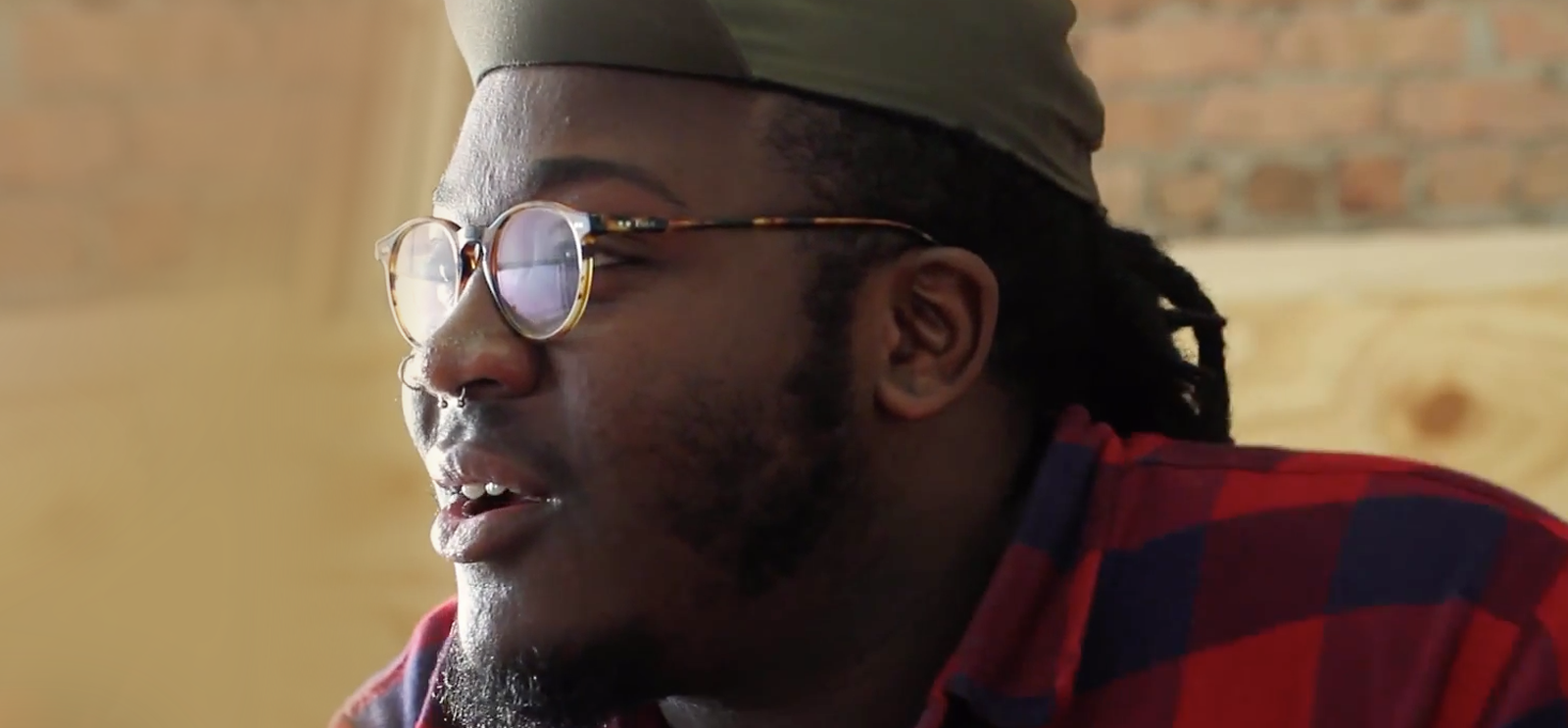James T. Green. (Photo courtesy UChicago Arts)
UChicago artist in residence James T. Green talks about his work, his life, and what it all means.
Chicago-based conceptual artist
James T. Green has never sold his work. On a Wednesday evening in early August, Green talked to a crowd at the
Logan Center about technology, his life, his values, and how they all converge to make his art. Artist and faculty member
Zachary Cahill, who was in the audience, encouraged Green to consider selling his work. Notwithstanding Green’s ethical qualms with doing so, Cahill implored him to do whatever it takes to continue producing more of the kind of pieces he’s made so far.
[[{"type":"media","view_mode":"media_original","fid":"2814","attributes":{"alt":"","class":"media-image","height":"440","typeof":"foaf:Image","width":"500"}}]] (Photo courtesy UChicago Arts)
Green, an artist in residence with the University’s
Arts + Public Life initiative and with the
Center for Race, Politics, and Culture, contributed to an exhibition at the Logan Center,
Three the Hard Way, which also featured the other two artists in residence for the Arts + Public Life program,
Ayana Contreras and
David Leggett, and was curated by
Renaissance Society associate curator
Hamza Walker, AB’88. The exhibition, which runs through this Sunday, explores the tension between nostalgia for a black nationalist period and recent events. Taking its title from a
1974 blaxploitation film, it asks what our society has to account for culturally, politically, and socially.
At the exhibition entrance, there’s a screening room off to the side; overlapping YouTube windows are projected on the wall, with the gray “loading” screen with the frustrating rotating wheel that we’re all familiar with. The unloaded videos in question are of recent instances of police brutality captured on camera, such as the death of Eric Garner. When the exhibit opened on July 10, people kept asking Green if the piece, which he describes as having to do with the “voyeuristic bombardment” of these images on the internet and on the news, was broken. His response: “No, it’s not broken, but do you really wanna see this?”
[[{"type":"media","view_mode":"media_original","fid":"2816","attributes":{"alt":"","class":"media-image","height":"440","typeof":"foaf:Image","width":"500"}}]] (Photography by Hannah Gitlin, ’16)
Green’s talk covered serious topics, but the mood was casual and friendly. He and the moderator, Chicago artist
Faheem Majeed, told the audience that they could ask questions at any time if they didn’t understand something. Green pulled up his work on his laptop throughout the talk, the desktop of which was projected on the wall behind him. One of the pieces he showed us was called
Post-Black.
Green offered the work’s backstory: He was visiting a surf shop during a Martin Luther King Day sale. The surf shop made an original image of the surfing MLK to advertise the sale, which offered 50 percent off all of the store’s black items. Green overlaid the text and put the image in a border; the gif that resulted has been a pivotal piece in Green’s career. It blew up on the internet, which led to Green placing this piece, among others, in a couple of shows. This was in 2011, when Green had just graduated from college at the
University of St. Francis in Joliet, Illinois, with a degree in graphic design and studio art. Since then he has participated in many more exhibitions, having his work featured at the
Chicago Museum of Contemporary Art, the
Gene Siskel Film Center, the
Chicago Artists Coalition, the
South Side Community Art Center, and the
Washington Park Arts Incubator.
[[{"type":"media","view_mode":"media_original","fid":"2815","attributes":{"alt":"","class":"media-image","height":"440","typeof":"foaf:Image","width":"500"}}]] (Photo courtesy UChicago Arts)
Post-Black didn’t take long to produce, which is often the case with new media. Green described his anxiety about being a new media artist—the feeling that his hand isn’t in the work enough, that in new media art the ability to get a sense of the artist’s process and labor is reduced and flattened. His mentors, he said, have helped him come to terms with the fact that a piece that takes him five minutes isn’t inherently worth less than a piece that took someone five years. Every five-minute piece, he’s learned, is the result of a lifetime of developing a disposition to view the world through a certain artistic lens.
Uniting all of Green’s work is the idea that he wants to use what he’s good at—he’s always tinkered with computers—in order to do something that matters. For example, in his
We(Act) series, he took high-resolution press photos of the die-in protests that are part of the Black Lives Matter movement and used
Photoshop to methodically remove all the protestors from the pieces. Through the resulting pieces, he explores the ideas of erasure, invisibility, and avoidance. Green’s work isn’t just showing off cool stuff that computers can do; according to Majeed, Green’s art is “exactly what new media art should be.”
[[{"type":"media","view_mode":"media_original","fid":"2817","attributes":{"alt":"","class":"media-image","height":"490","typeof":"foaf:Image","width":"500"}}]] (Photography by Hannah Gitlin, ’16)

